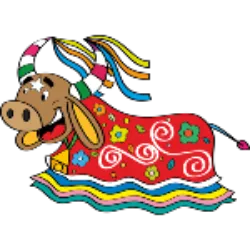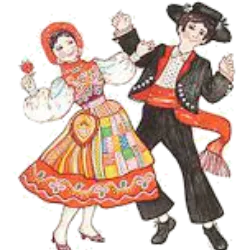The festival
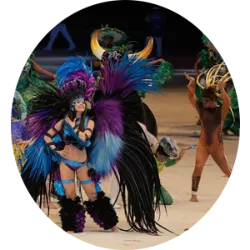
The festival features 21 items, including presenter, toada raiser, batucada and marujada, among others. The predominant music is the toada, accompanied by more than 400 rhythmists, while the ritual, usually at the end of the performances, makes reference to indigenous myths and legends. Auto do Boi tells the story of Pai Francisco and Mãe Catirina, justifying the origin of the festival. The presentations also include elements such as the Presenter, Levantador de Toadas, Amo do Boi, Sinhazinha da Fazenda and Typical Regional Figures, portraying local culture and folklore. The judges, nine in total, evaluate criteria such as tuning and originality to maintain folkloric authenticity. The event draws crowds and includes float parades, craft fairs and musical shows.
The Parintins Folklore Festival
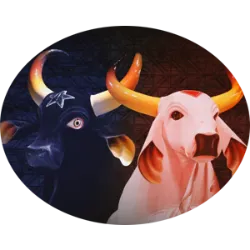
The Parintins Folklore Festival , held annually in the city of Parintins, Amazonas, is famous for its bois-bumbás performances. On the last weekend of June, there is a competition between two rival oxen, the Boi Garantido (red and white) and the Boi Caprichoso (blue and white), who perform in their own "bumbódromos". The performances, elaborate and involving hundreds of participants, include dancers, singers, musicians and artisans, narrating folk stories from the region through theatrical performances, dances and traditional music. A jury evaluates each presentation based on criteria such as creativity, originality and musical harmony. In addition to the presentations of the bois-bumbás, the event features float parades, craft fairs, regional dances and musical shows.
Test yourself with one of these challenges 👇
Discover some interesting facts about PARINTINS FESTIVAL
The Organization of the Folkloric Ensemble
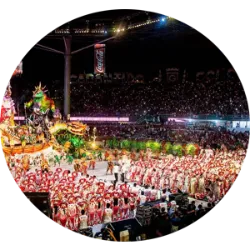
The Organization of the Folkloric Ensemble is one of the requirements assessed by the judges during the presentations of the bois-bumbás Boi Garantido and Boi Caprichoso. This requirement refers to each group's ability to organize and execute their performances in a coherent, fluid and impactful manner. The evaluation of the organization of the folklore ensemble considers several aspects, including the harmony between the different elements of the performance, such as dance, music, costumes and props, as well as the synchrony of the players on stage. The judges observe the narrative fluidity of the performances, the smooth transition between the different segments of the show and the groups' ability to keep the audience engaged and moved throughout the performance.
The Choreography
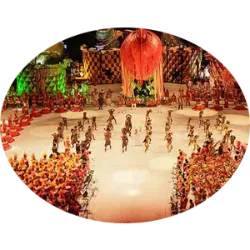
The Choreography item refers to the choreographed and coordinated presentations of the members of the bois-bumbás, both Boi Garantido and Boi Caprichoso. These choreographies are created with precise and synchronized movements, which complement the narrative of the performances and highlight the aesthetic beauty and artistic expression of the folkloric groups. The choreographies are carefully rehearsed and performed by dancers and players, who incorporate traditional dance steps from the Amazon region, as well as specific movements created for each performance. They contribute to the vibrant and exciting atmosphere of the festival, engaging the public and adding dynamism to the oxen performances. The quality and originality of the choreographies are considered by the judges when evaluating the performance of each ox during the event.
The question Galera

The question Galera refers to the participation and animation of the public during the presentations of the bois-bumbás. The crowd is made up of the fans and admirers of each ox, who are actively involved in the show, expressing their support and enthusiasm. During the performances, the crowd vibrates, sings, dances and gets excited, creating a festive and contagious atmosphere. The excitement and engagement of the crowd are fundamental aspects in the evaluation of the festival, reflecting popular support and passion for the cultural tradition represented by the Caprichoso and Garantido oxen.
The question Vaqueirada
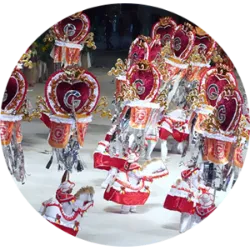
The question Vaqueirada refers to the representation of the typical activities and customs of cowboys from the Amazon region during the presentations of the bois-bumbás. Cowgirls are an important part of local folklore, and their representation in ox performances includes aspects such as the cowboys' traditional clothing, their riding and roping skills, as well as possible interactions with other elements of the performance, such as the ox and other characters. Fidelity to the cowboy tradition, authenticity in the representation of activities and the visual and emotional impact of cowgirls on the public are considered by the judges when evaluating this aspect.
The Amazon Legend
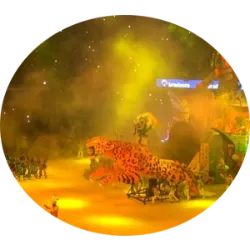
The Amazon Legend item refers to the representation and interpretation of legends and myths characteristic of the Amazon region during the presentations of the bois-bumbás. The groups use this aspect to create performances that narrate traditional stories, indigenous legends and popular tales from the Amazon. The ability to tell these stories, along with fidelity to oral tradition and local culture, are fundamental aspects evaluated by the judges. The quality of the staging, the creativity in adapting the legends and the ability to involve the audience with the magic and mystery of Amazonian narratives are also considered in the final scoring of the presentations.
Test yourself with one of these challenges 👇
HOME

